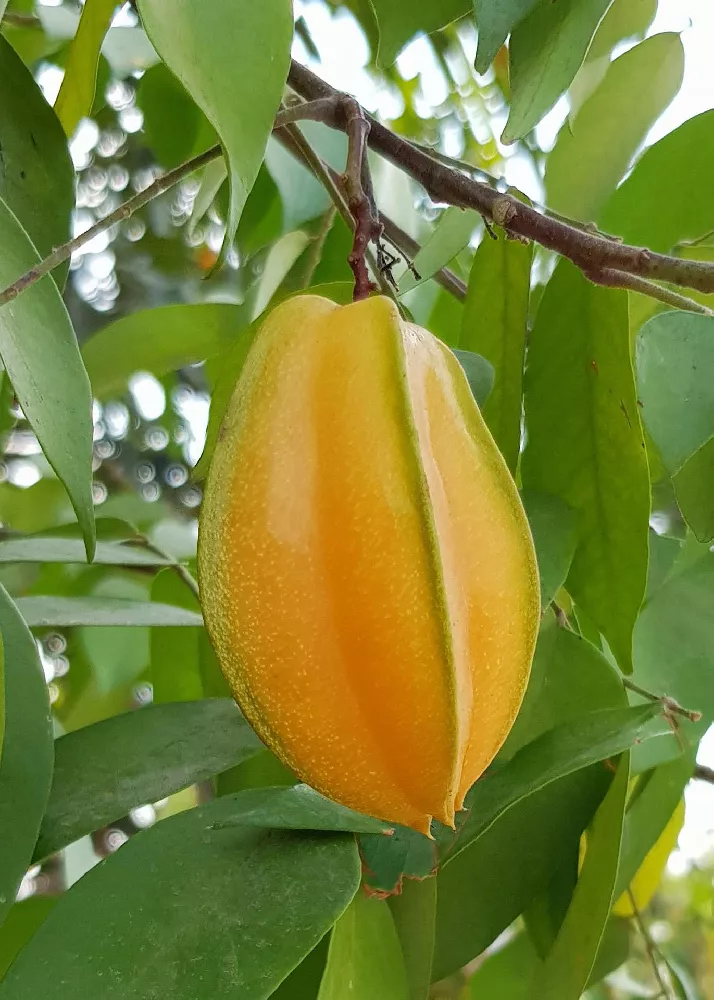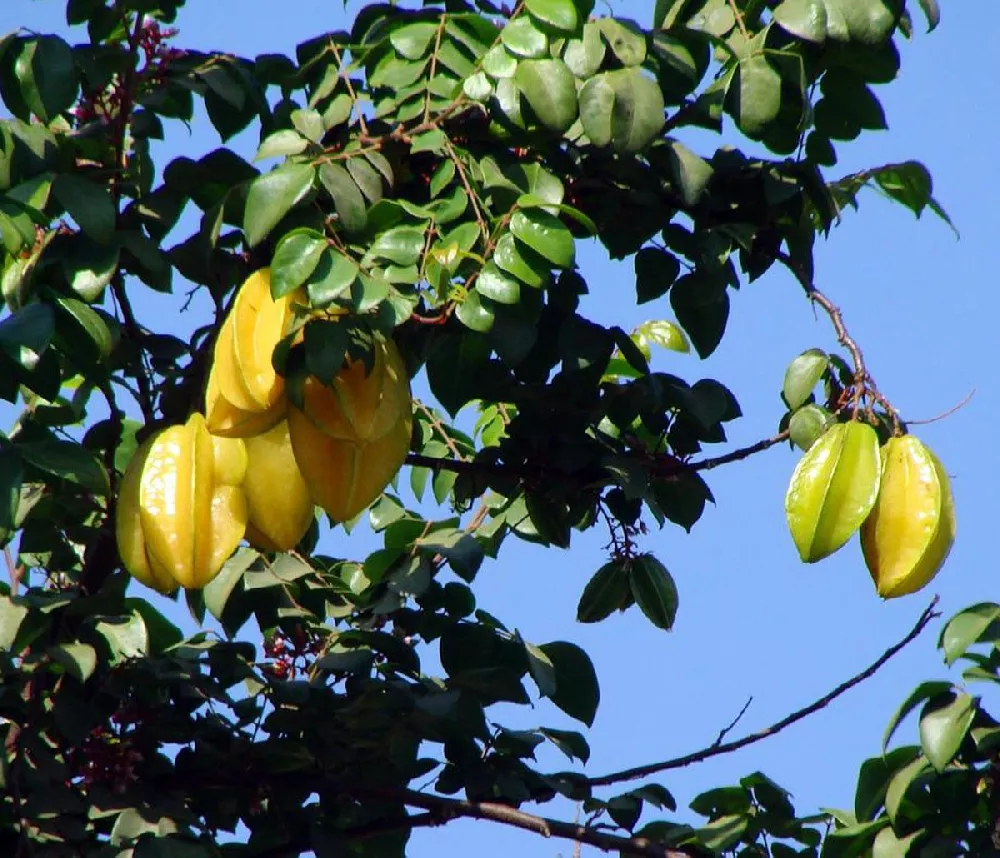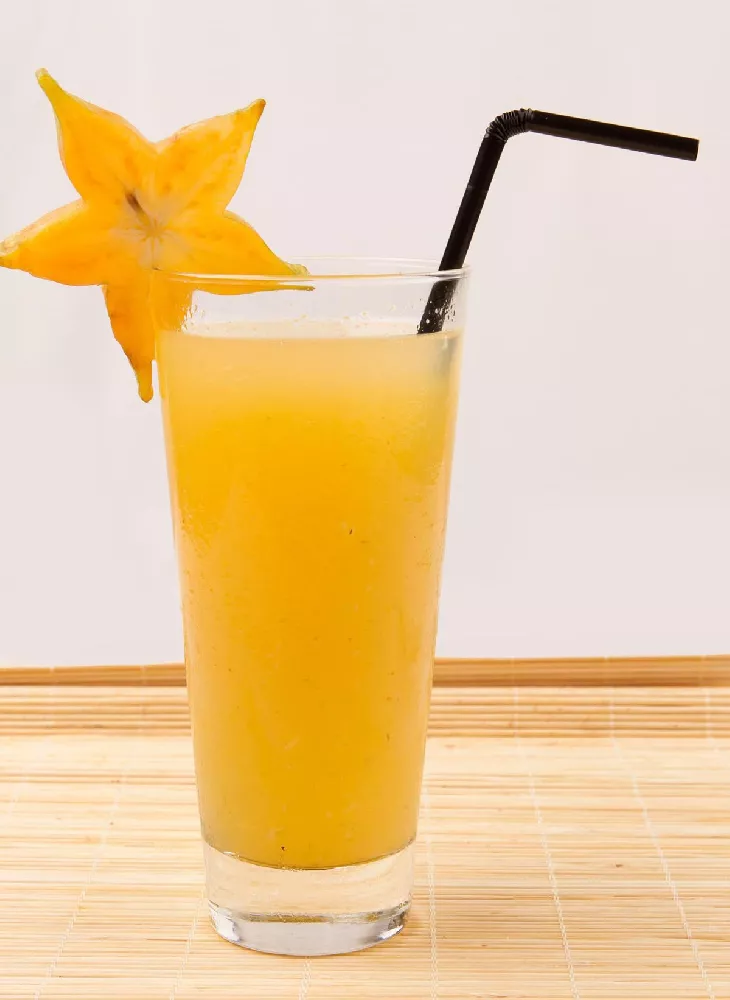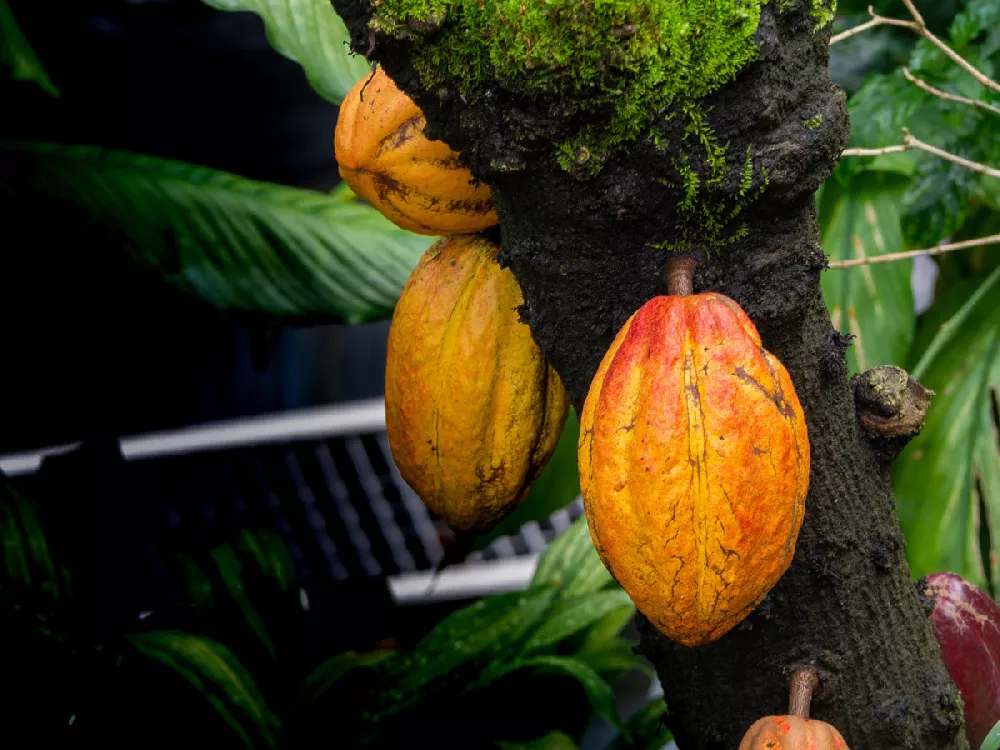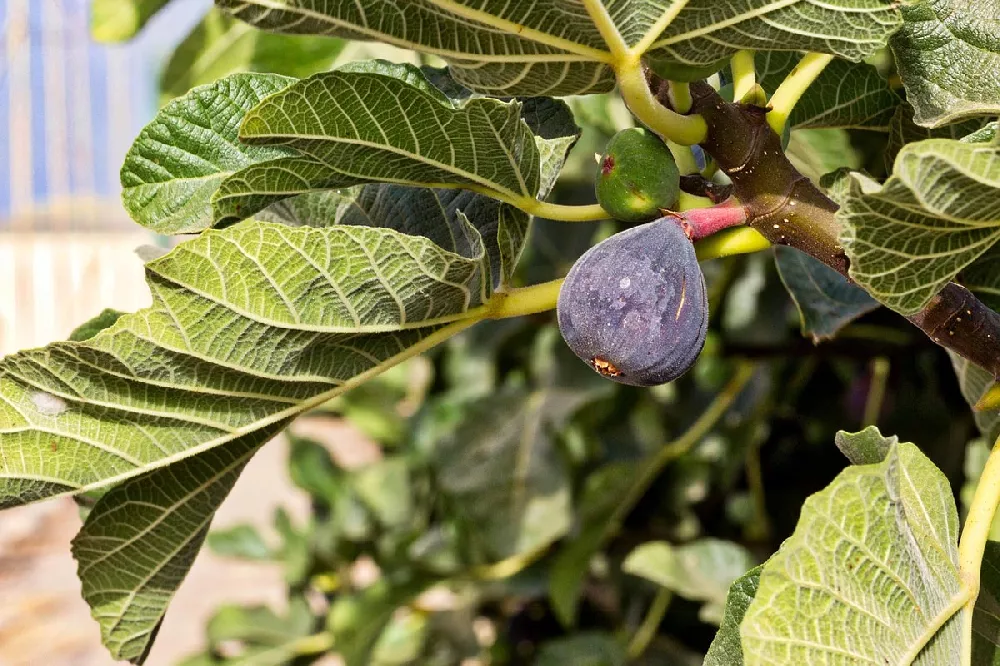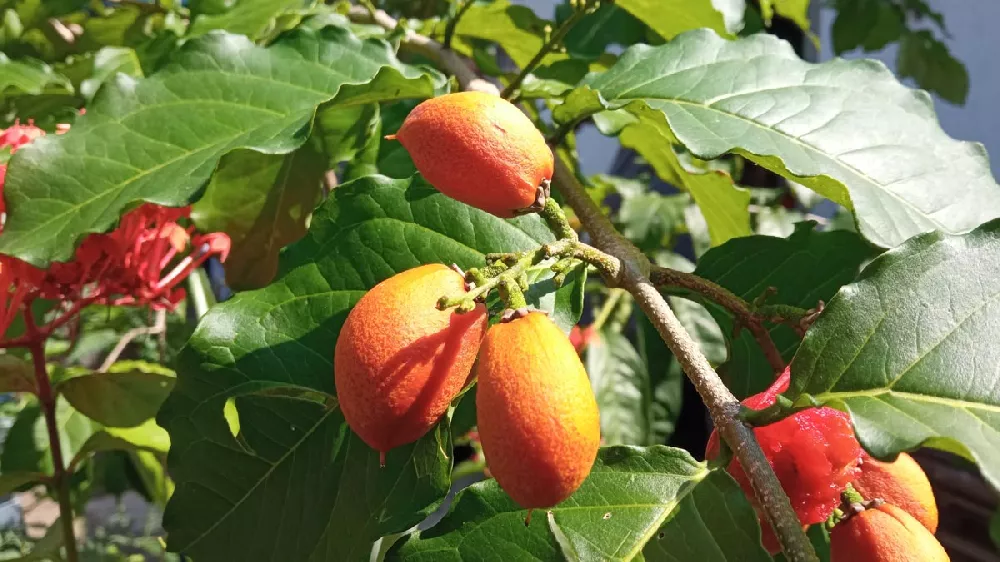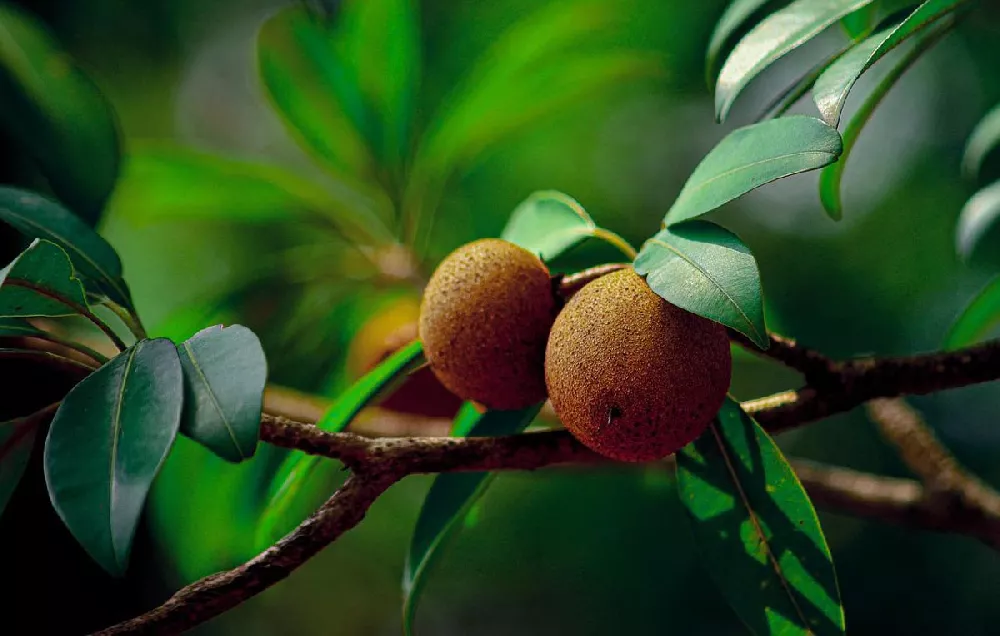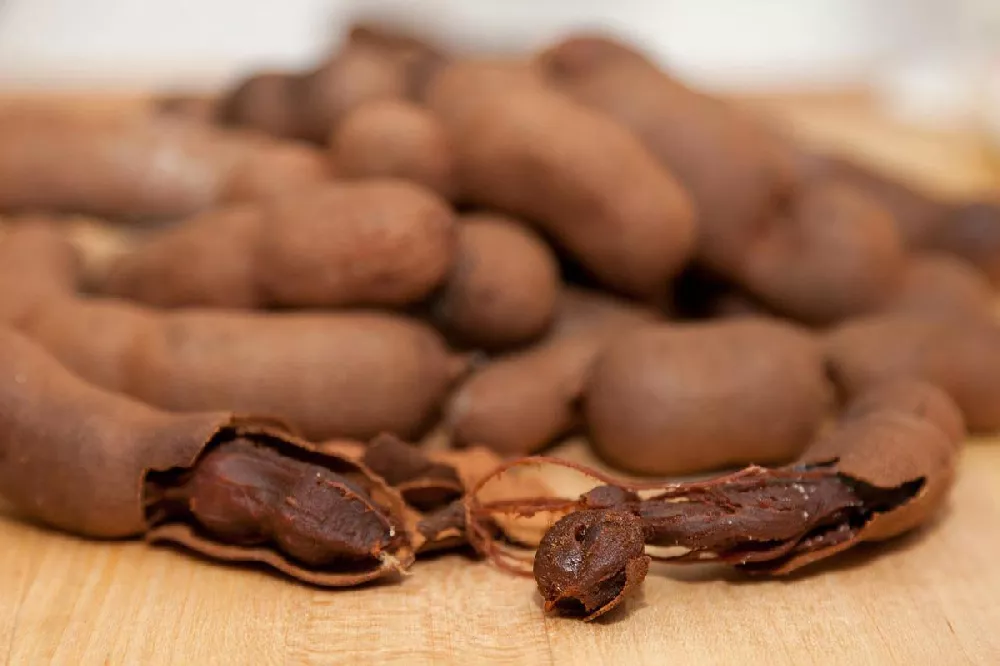- Home >
- Edible Plants >
- Starfruit Tree
Starfruit Tree for Sale - Buying & Growing Guide
It's possible there is no better-named plant in the horticultural world than the starfruit tree, Averrhoa carambola. That fact will be clear to you if you cut into one of the tangy, refreshing fruits of this tropical tree. The fruit is indeed star-shaped, but what's more important is that it is delicious, with a flavor reminiscent of apples mixed with citrus. The fruits are perfect to eat fresh or for use in salads, garnishes, jellies and jams, and they make a refreshing juice. The starfruit tree is attractive, as well: a small, full evergreen with a wide canopy and pretty purple flowers in the spring. Here are a few more reasons why you should invite the starfruit tree into your garden:
- Grown outside in the southern U.S.; adapts well to containers in the North.
- Self-fertile trees yield a harvest even if you only have one tree.
- A single fruit gives you more than half your daily requirement for vitamin C, along with 3 grams of fiber, as well as other vitamins and minerals.
Enter your zip code to find nearby stores that may carry this plant.
Plant Care
Sunlight

Starfruit trees do best in full sun — six hours or more of direct light a day.
Watering
Starfruit trees are not drought-tolerant and need regular watering whenever the soil is dry.
Fertilizing

Feed throughout the growing season with a balanced fertilizer, such as a 10-10-10 formula.
Planting and Care
Planting instructions
Site your starfruit tree in a spot that gets full sun, in soil that drains well. The tree isn’t picky about soil type, but doesn’t like standing in water, and it appreciates soil that’s been mixed with organic matter. Unpot the sapling and tease out any encircling roots, which can girdle the tree and eventually kill it. Dig a hole that’s a little less deep than the root ball and two to three times as wide. Mix some well-rotted manure or compost in the bottom of the hole and place the tree on top of it. Hold it steady while you fill in around it with good quality topsoil that’s been mixed with well-rotted compost or manure, tamping down as you go to eliminate air pockets. The top of the root flare should be about an inch above the surrounding soil. Water thoroughly. Add a 2- to 3-inch layer of an organic mulch, such as bark chips, around the root zone, taking care that it doesn’t touch the trunk itself.
Watering and nutrients
Water your newly-planted starfruit tree several times a week until you see robust new growth. Then you can taper back your watering, and only water thoroughly when the top 2 inches of soil are dry. If you see yellow, wilted leaves, it may be a sign you are overwatering. Fertilize the tree throughout the growing season with a balanced fertilizer such as a 10-10-10 or 12-12-12 formula. Taper back during the winter, when growth slows.
Pollination
Starfruit trees are self-fertile, but you will have a much larger harvest if you have two or more trees. The Starfruit tree has small, lavender-purple flowers, which are pollinated by a variety of bees, resulting in fruit which is harvested in fall.
Pruning
Prune your starfruit tree in early spring to remove any wayward branches that mar the tree’s shape. You can also prune out any dead, diseased, or damaged limbs whenever you see them. If your tree is fruiting and you see branches bending under the weight of multiple fruits, trim out a few of the fruit to give more room to those remaining.
Pests, diseases, and animals
Pests that may bother your starfruit trees include carambola fruit fly, squash bugs, and thrips. Your first line of defense is to keep your tree healthy so that it can fend off infestations when they happen. Other options include releasing predatory insects such as parasitic wasps and ladybugs, and, as a last resort, insecticides. Some of the diseases of the starfruit tree are fungal leaf spot, anthracnose fruit rot, and root rot. These are common to fruit trees, and there are numerous fungicides and other products available to help fight them.
Harvesting
It’s difficult to say what time of year your fruit will be ripe, because this varies depending on where you live, and a healthy tree can produce two or three crops in a single year. In southern Florida, where they are grown commercially, they are ready for picking in late summer. A star fruit is ripe when the color of the skin turns from green to a vivid yellow, which is generally two to three months after the fruit first appears. The skin will also become somewhat waxy to the touch. The fruit is easily bruised, so carefully hand-pick and place gently on a tray. It should be used as soon as possible, as it is somewhat fragile and easily bruised.
Achieving maximum results
The starfruit tree grows well outside in most of Florida, southern Texas, and a few other spots in the U.S. Gardeners in the northern U.S. can grow this intriguing plant, too — in a container that is brought inside in the winter. The starfruit tree can handle temperatures down to about 30 degrees Fahrenheit; lower than that, and it’s better placed in front of a sunny window indoors. When planning a container-grown starfruit tree, choose a container that is roughly twice the size of the root ball, with good drainage in the bottom. Use a good-quality potting mix, and be aware that you may need to water your tree more often than you would if it were outside. Judge whether it needs water by sticking your finger into the soil to see if it is dry 2 inches down — if so, give it a good drink. It will also benefit from an occasional wiping down of the leaves with a wet cloth, and misting of the leaves once a month.
FAQs
Can I get fruit from container-grown trees?
Yes, it's possible, by pollinating the flowers by hand. Take a small paint brush and touch it to the center of a bloom. Swirl it around lightly — you should see some pollen sticking to the brush. Repeat the process with other blooms, and you should eventually see the flower fall off and a tiny fruit begin to form.
Is starfruit toxic?
The fruit itself is not toxic and can be enjoyed in a number of ways. However, like grapefruit, star fruit may interact with some medications. It is also suggested that those with kidney disease ask their doctor before they consume any, as it contains a substance called oxalic acid, which may cause or exacerbate kidney problems. The fruit should never be fed to dogs or cats, who cannot tolerate oxalic acid.
How long does it take for a starfruit tree to bear fruit?
You won't get fruit the first year after planting it, because the tree needs to establish itself and grow a robust root system. The next year, you may get a very light harvest, and by the third year, you should have an appreciable amount of fruit on your tree.
Compare Similar Products
You can't add more Product Name - Product size to the cart.
OK